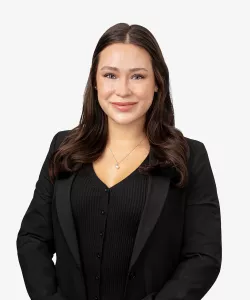Wawrzenski v. United Airlines, Inc.: Key Takeaways for Employers Navigating Workplace Policies
Employers wanting to create a more equitable and legally compliant workplace while also reducing their risk of litigation may want to pay particular attention to the California Court of Appeal’s recent decision in Wawrzenski. The California Court of Appeal, Second Appellate District’s decision in Wawrzenski serves as a reminder to employers of the importance of fair and consistent policy enforcement and the need for vigilance in recognizing and addressing workplace discrimination and harassment. The Wawrzenski decision also highlights the tension between on-the-job and off-the-job conduct, and the challenges employers face when enforcing company policies in the age of social media.
Wawrzenski v. United Airlines, Case No. 20STCV43930 (October 22, 2024), concerns the termination of a United flight attendant who was in violation of several United company policies for posting photos of herself in her United uniform along with, among other things, bikini shots and links to her OnlyFans page. She was disciplined and instructed to remove all photos of herself wearing a United uniform. After it was discovered that she failed to remove all such photos, she was terminated. Wawrzenski then sued United for discrimination, harassment, retaliation, and wrongful termination under California law. The trial court granted summary judgment in United’s favor based largely on evidence that United’s decision to terminate her was based on legitimate business reasons, and Wawrzenski failed to present evidence sufficient to establish a triable issue of sexual harassment.
Upon a de novo review of the evidence, the California Court of Appeal reversed the trial court’s decision granting summary judgment in favor of United. The court found that Wawrzenski raised triable issues of fact with respect to the following: (1) whether United treated male employees with similar social media activities more favorably, which could suggest discriminatory intent, (2) whether coworker and supervisor comments about Wawrzenski’s body, including discussions about her compliance with the company dress code, created a hostile work environment, (3) whether United retaliated against Wawrzenski for her complaints about discrimination and harassment, and (4) whether United may not have taken adequate steps to prevent discrimination and harassment.
Background
Wawrzenski began working as a flight attendant for United in 2015. During her time at United, she reported experiencing frequent body-shaming comments and sexualized remarks about her appearance from coworkers and supervisors. These included derogatory comments about her body, sexual advances, and scrutiny over her uniform, with some managers even making her change uniforms. While many of these comments were made in an attempt to enforce United’s dress code, Wawrzenski alleged the comments were nonetheless harassing and discriminatory. Wawrzenski complained that male employees were not subjected to the same level of scrutiny, which she believed was based on her gender and body type.
In June 2020, United received an anonymous tip about Wawrzenski’s social media accounts. The tipster claimed Wawrzenski was posting suggestive photos in her United uniform and using her social media to promote her paid content on OnlyFans, a platform that often features explicit material. In response, United initiated an investigation, which confirmed the anonymous tip. United supervisors believed that Wawrzenski’s photos and online activities violated company policies on professionalism and created a conflict of interest by monetizing her social media presence using the United image. United also believed that the combination of personal and professional content was damaging to the airline’s reputation and violated ethical guidelines.
Wawrzenski defended her actions, stating that the photos were not inappropriate and that other employees, including male flight attendants, were able to post similar content on their social media without facing consequences. She also criticized the investigation as sexist, arguing that she was being treated unfairly due to her gender and appearance.
Wawrzenski was issued United’s most serious level of written discipline and was instructed to remove all photos of United’s uniforms from her social media accounts. This is the same level of discipline issued to other employees found to have engaged in similar conduct. However, when it was discovered that she failed to remove one photo depicting a United uniform, she was terminated.
Wawrzenski challenged her termination, claiming that the company’s actions were discriminatory. She filed a complaint with the California State Department of Fair Employment and Housing in October 2020, followed by a civil lawsuit. She alleged causes of action for gender discrimination, hostile work environment harassment, and retaliation in violation of the Fair Employment and Housing Act (FEHA), failure to prevent discrimination, harassment, and retaliation in violation of FEHA, whistleblower retaliation in violation of Labor Code section 1102.5, wrongful termination in violation of public policy, and intentional infliction of emotional distress. Wawrzenski also sought punitive damages.
United moved for summary judgment on 31 issues covering the elements of all Wawrzenski’s causes of action. The trial court granted United’s motion in its entirety, finding that: (1) a supervisor’s comment about not all employees being “under the same umbrella” as Wawrzenski was not direct evidence of discrimination, and Wawrzenski did not produce evidence that United treated male employees differently, (2) the harassment Wawrzenski alleged was not severe or pervasive enough to meet the legal standard, (3) there was no connection between Wawrzenski’s complaints about harassment and her termination, (4) there was no evidence linking Wawrzenski’s termination to any whistleblowing activity, (5) United’s conduct did not meet the legal definition of “extreme and outrageous” necessary for an emotional distress claim, (6) there was no evidence of discriminatory animus that would support a wrongful termination claim, and (7) Wawrzenski failed to establish a claim for punitive damages.
California Court of Appeal’s Decision
The Court of Appeal found that the trial court erred in granting summary judgment in favor of United Airlines on several of Wawrzenski’s claims. The court found some genuine issues of material fact that must be resolved at trial, rather than summarily adjudicated in United’s favor.
The court concluded that Wawrzenski presented enough evidence to make a prima facie case of gender discrimination. Wawrzenski produced sufficient evidence that United treated at least three male employees with similar social media activities more favorably, which could suggest discriminatory intent. This created a factual dispute as to whether Wawrzenski’s termination was motivated by a discriminatory animus. Furthermore, the court found that Wawrzenski provided sufficient evidence to suggest she was subjected to a hostile work environment. The court emphasized the low bar required to create a factual dispute on a sexual harassment claim: (1) only one incident is sufficient and (2) the plaintiff is only required to show that a reasonable person subjected to the alleged harassing conduct would find that “the harassment so altered working conditions as to ‘make it more difficult to do the job.’” Here, coworkers’ and supervisors’ comments about Wawrzenski’s body and uniform were sufficient.
The court also determined that there was a triable issue regarding whether United retaliated against Wawrzenski for her complaints about discrimination and harassment. The court found that the trial court erred in not allowing evidence of comments made before the limitations period for the purpose of establishing animus. In addition, the timing of Wawrzenski’s termination, just days after she complained about sexual harassment, supported an inference of a retaliatory motive, even though United also discovered that she had failed to remove all photos of her uniform from her social media after she complained.
In sum, the court’s decision emphasizes the very low showing an employee can make to survive summary judgment on causes of action based on alleged harassment. Even when, as here, the employer had a legitimate business reason for terminating the employee, the decision may be called into question based on circumstantial evidence of unequal treatment or potential harassment.
Takeaways for Employers
After Wawrzenski, employers should ensure that workplace policies, especially those related to social media and employee conduct, are applied consistently across all employees, regardless of gender or other protected characteristics. Social media norms are evolving. That does not mean that employers must reduce their standards of conduct. But it does mean that employers must be up to date on best practices for enforcing policies consistently and fairly, considering these cultural shifts and technological developments. Furthermore, employers should promptly and thoroughly investigate all complaints of discrimination and harassment, even those made during or after a termination or resignation. When enforcing policies, it is important that supervisors are trained to communicate coaching and discipline in a respectful manner. Lastly, all employers should make sure to consult with legal counsel when developing or revising workplace policies to ensure they are legally sound and effectively mitigate risks of discrimination and harassment claims.
Contacts
- Related Practices

